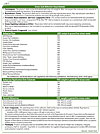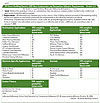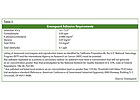

This article provides an overview of the trend, along with guidance on the facets that impact adhesives and sealants producers and users.
Arguably, the green trend started in the 1970s with the promulgation of the Clean Air Act. This legislation led the Environmental Protection Agency to develop industry- and product-specific regulations limiting certain chemical and particle emissions into the air. Much of the product-development activity in the formulated markets has been driven by this single piece of legislation since then. However, the 1990s saw the emergence of non-governmental interests hoping to create a green "industry" with non-regulatory incentives for designers, product manufacturers and builders to create building projects with more regard for the environment. Much effort was placed on building materials, and three organizations have led this trend in North America.

- Green Seal promotes the manufacture, purchase and use of environmentally responsible products and services. Green Seal is focused entirely on specifications and standards for materials of construction, with special emphasis on buildings within the government and institutional markets, such as lodging and universities.
- U.S. Green Building Council provides a list of standards for environmentally sustainable design and construction through its Leadership in Energy and Environmental Design (LEED) Green Building Rating System. The LEED program is designed to define, promote and recognize building projects with sustainable environmental benefits. LEED also encourages "green" competition among building designers and contractors. LEED is aimed primarily at overall building design and construction methods, and generally defers to and/or mimics other organizations for specific product specifications.
- Greenguard Environmental Institute replaced the AQSpec List in 2001, and, much like Green Seal, provides product certification of materials of construction based upon proven emission standards with the goal of improving interior air quality. Greenguard's original goals focused on emissions, but recently expanded to certify design, materials and construction methods to reduce the risk associated with mold.
Green Seal has taken a comprehensive approach to specifying those product attributes that are generally considered environmentally responsible. The specific standard of interest to the adhesives industry is GS-36 (http://www.greenseal.org/certification/standards/commercialadhesives.cfm ), which covers adhesives use for ABS/PVC pipe, carpet pad, ceramic tile, floor coverings, cove base, construction, contact bonding, roofing, wood flooring and glazing (see Table 1).
U.S. Green Building Council's Leadership in Energy and Environmental Design (LEED) is an overall project certification program. The LEED qualifications for adhesives are less direct in that a project receives certification points for the use of materials that meet LEED standards. The adhesive standard can be found at https://www.usgbc.org/ShowFile.aspx?DocumentID=1095 and is shown in Table 2 (note the reference to certain portions of the Green Seal specification).

ChemQuest expects government regulations to become less important in driving new product development over the next 10 years as the free market mechanisms associated with the green industry trend broaden and grow. The competition that arises from these mechanisms will result in new formulations and new raw materials to support the ever-increasing needs of the designer/architect and the builder.
Michael D. Brown is vice president of The ChemQuest Group Inc., Cincinnati, OH, an international strategic management consulting firm specializing in the adhesives, sealants and coatings industries.
For more information, contact The ChemQuest Group Inc., 8150 Corporate Park Drive, Suite 250, Cincinnati, OH 45242; phone (513) 469-7555; fax (513) 469-7779; or visit http://www.chemquest.com .